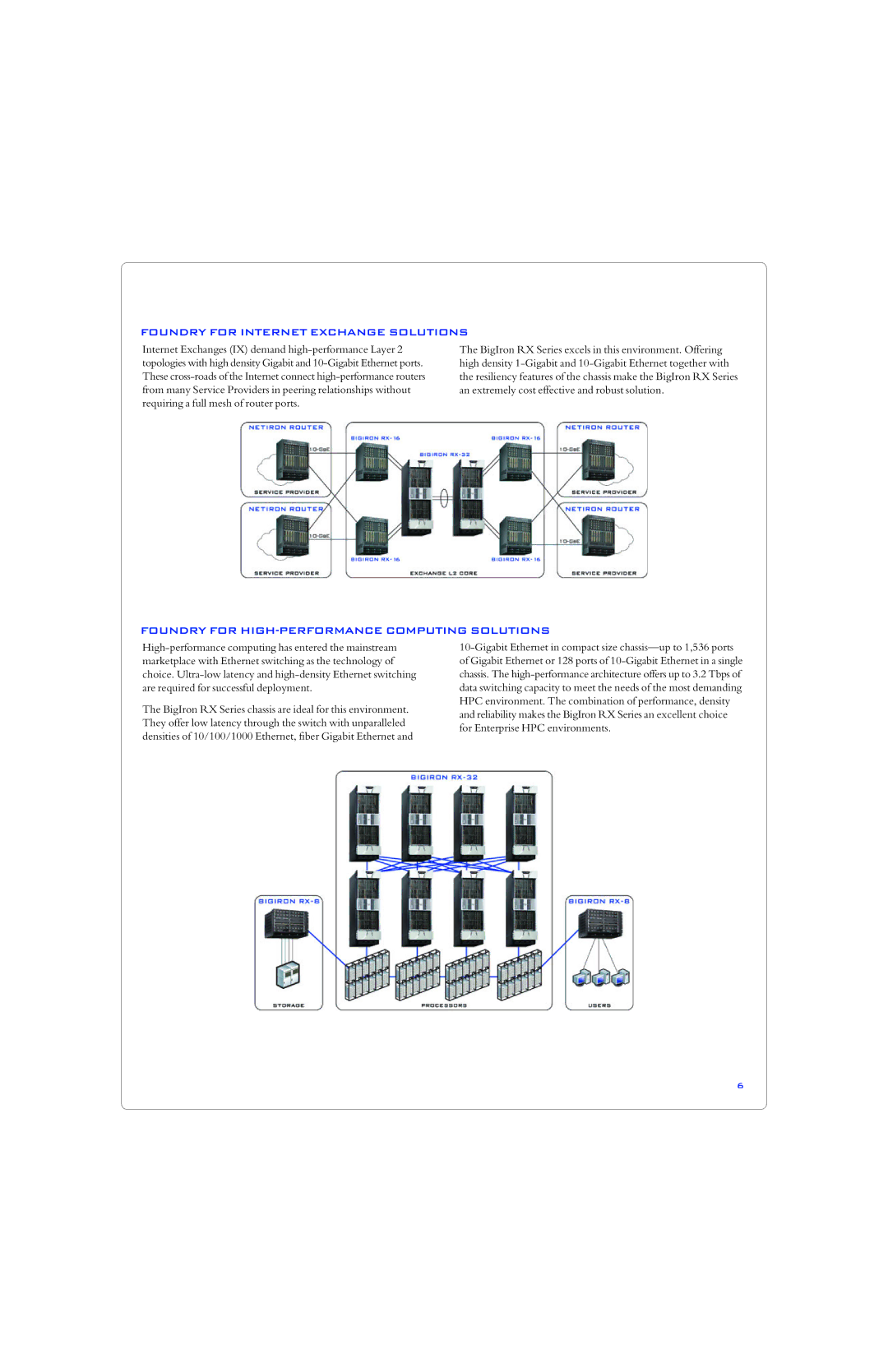RX-4, RX-76, RX-32, RX-8 specifications
Foundry Networks has established itself as a leader in network solutions, providing a robust set of products tailored for high-performance environments. Among its esteemed offerings are the RX-32, RX-8, RX-4, and RX-76, each designed to optimize network performance, scalability, and management in diverse applications.The RX-32 is a powerful device that excels in delivering high availability and reliability for strategic network architectures. It features advanced load balancing technology, which ensures efficient traffic distribution across multiple networks. The RX-32 supports a modular design, allowing for easy upgrades and flexibility to adapt as business needs evolve.
The RX-8 caters to enterprises seeking to enhance their data center operations. Its support for 10 Gigabit Ethernet helps to accommodate the growing needs for bandwidth in modern applications. With advanced security features, including deep packet inspection and integrated access control lists, the RX-8 safeguards critical network assets while maintaining optimal performance.
For businesses prioritizing cost-effective solutions without compromising on performance, the RX-4 stands out as an ideal choice. This model is designed for smaller networks but does not skimp on features. It supports PoE (Power over Ethernet) capabilities, allowing for simplified deployment of devices such as IP phones and wireless access points, thus reducing installation complexity and costs.
The RX-76 is engineered for maximum scalability, making it suitable for larger enterprises or rapidly growing organizations. With its ability to support thousands of simultaneous users, the RX-76 is optimized for heavy traffic loads and resource-heavy applications. Its advanced firmware provides numerous layering options, enabling customized routing and switching to suit specific network demands.
Common characteristics across the RX series include a focus on high throughput and low latency, essential for real-time data applications such as video conferencing and VoIP. Moreover, these devices incorporate state-of-the-art management tools, allowing IT professionals to monitor network performance proactively and troubleshoot issues quickly. This results in enhanced operational efficiency and a better user experience.
In summary, Foundry Networks' RX-32, RX-8, RX-4, and RX-76 models are designed to meet the diverse needs of modern networks, offering exceptional performance, scalability, and reliability. Their advanced features and technologies position them as favorable choices for organizations seeking to bolster their network infrastructure. Whether in small businesses or large enterprises, these devices are pivotal in supporting continuous growth and innovation.

